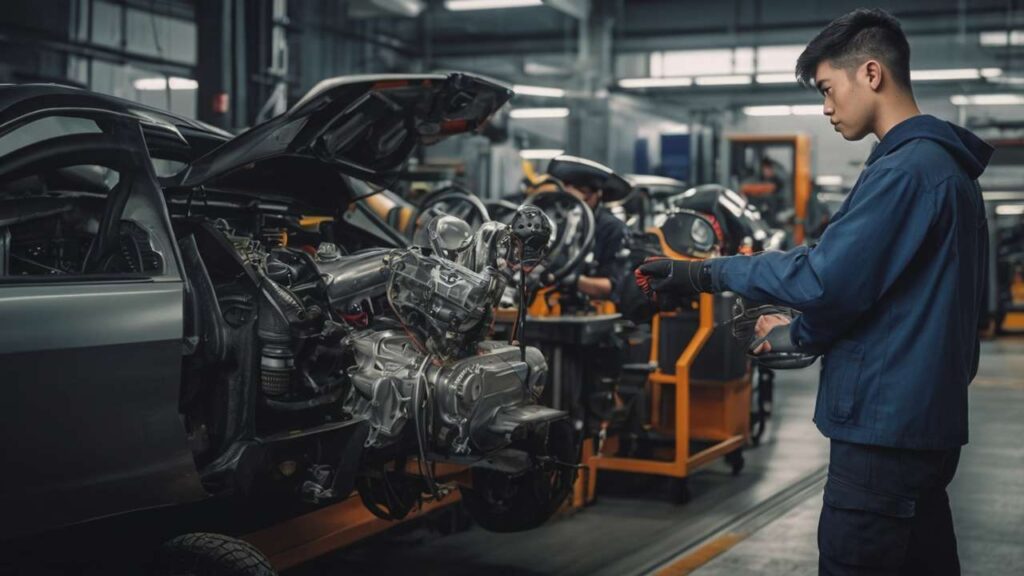Most drivers think of brake pads, rotors, or calipers when the topic of brake safety comes up. But the quiet, unseen force that actually makes it all work is often ignored—your brake fluid. I’ll be honest, even I once overlooked it. My first car? I religiously changed the oil but didn’t touch the brake fluid for years. The result was spongy brakes during a mountain trip that scared me half to death. Since then, I’ve come to realize that brake fluid 101 isn’t just technical talk—it’s the unsung hero of your stopping power, and without it, the best brake pads in the world won’t save you.
Brake fluid may not be glamorous, but it’s one of the most powerful safety components hiding under the hood. Understanding it, caring for it, and replacing it on time is the difference between confident braking and a terrifying close call.
What Is Brake Fluid and Why Does It Matter?
Your car’s braking system works on hydraulics. Press the pedal, and instead of a cable pulling something (like in a bicycle), your foot’s force pushes brake fluid through narrow lines. This fluid doesn’t compress; it transfers your input directly into the calipers or wheel cylinders, clamping the pads against the rotors or pushing shoes against drums.
Think of brake fluid as the lifeblood of the system. Without it, you’re not stopping—period. Professional technicians often remind drivers that “fluid doesn’t wear out like pads, but it gets contaminated,” and that contamination is what slowly kills performance.
Interestingly, a trusted North Carolina brake service expert once explained to me that the hydraulic consistency of brake fluid allows even small vehicles to stop giant trucks safely, provided the fluid remains clean and at the right level. That’s why it matters far more than most people realize.
Why Brake Fluid Needs to Be Changed
Unlike motor oil, brake fluid isn’t lubricating moving metal—it’s under pressure and heat constantly. The biggest issue is that brake fluid is hygroscopic. That’s just a fancy way of saying it absorbs moisture from the air. Even though the system is sealed, small amounts of water vapor sneak in over time.
Here’s the problem:
- Water lowers the fluid’s boiling point. On steep roads, or during sudden braking, overheated fluid can literally boil, creating vapor pockets. That leads to spongy pedals and longer stopping distances.
- Moisture causes internal rust. Tiny droplets corrode brake lines, master cylinders, and calipers from the inside out.
I once saw a repair bill for a car whose fluid was ignored for years—new brake lines, calipers, and master cylinder. It cost more than a used engine swap. Compare that to a $120 fluid flush every two years, and you see why skipping this service is a negative choice.
As covered in The Early Warning Signs of Brake Trouble: Don’t Wait for the Grinding Noise, waiting until there’s an obvious symptom is simply too late.
How to Check Brake Fluid
Checking brake fluid isn’t rocket science, and most drivers can do a quick inspection without any tools. Pop the hood, locate the small translucent reservoir (usually near the firewall on the driver’s side), and look at the level markers.
- The fluid should sit between “MIN” and “MAX.”
- Good fluid is clear to light amber.
- Dark brown or almost black fluid? That’s burnt and overdue for replacement.
One expert tip: never open the cap unless necessary, because exposure accelerates moisture absorption. If in doubt, leave it to a professional brake service specialist in North Carolina to test it properly with a brake fluid tester.
Signs of Bad Brake Fluid
Bad brake fluid doesn’t hide forever. Some clear signals include:
- A soft or spongy brake pedal.
- Increased stopping distance.
- Dark or burnt smell near the reservoir.
- Corrosion visible on nearby components.
These signs often overlap with pad or rotor wear, which is why many drivers misdiagnose the issue. And while DIY is tempting, articles like DIY vs. Pro: Why Brake Repair Is Best Left to North Carolina’s Experts explain why fluid-related problems are best left to trained technicians with the right bleeding equipment.
Maintenance Schedule for Brake Fluid
Most manufacturers recommend replacing brake fluid every 2 years or 30,000 miles—whichever comes first. Some high-performance vehicles shorten that to 12–18 months.
Professional shops use pressure bleeders to flush the old fluid out completely and refill it with fresh DOT 3, DOT 4, or DOT 5.1 (depending on the vehicle). Using the wrong type can damage seals, which is why expert guidance is critical.
Honestly, I’ve seen people top off with power steering fluid because “it looked the same.” That mistake destroyed their brake system in a week. So yeah, follow the schedule, and if unsure, trust a reliable brake services expert.
The Overlooked Costs of Neglect
Ignoring brake fluid doesn’t just affect safety—it hits the wallet. As The Cost of Waiting: How Ignoring Brake Issues Can Empty Your Wallet explains, minor maintenance skipped today turns into expensive repairs tomorrow. Rusted lines, seized calipers, and failing master cylinders are common outcomes.
Disc brakes and drum brakes both rely on the same fluid, though they wear differently. If you’re curious, Disc Brakes vs. Drum Brakes: Understanding Your Vehicle’s Braking System is a great deep dive into why fluid health affects them both.
Real-Life Example: A Case Study
One of my neighbors ignored brake fluid for 7 years. His minivan finally developed a sudden brake failure on a family trip. Luckily, no accident happened, but the repair required a full system overhaul: master cylinder, lines, and calipers. The bill? Over $2,500. A routine flush would’ve cost less than $150.
This isn’t scare tactics—it’s real. As another expert mechanic put it: “Brake fluid is cheap. Metal parts are not.”
Looking Ahead: More Than Just Brake Fluid
Brake maintenance isn’t a single-topic conversation. Future insights on what to expect from a professional brake inspection in North Carolina could help readers understand how technicians test pressure, measure pad thickness, and check for leaks. Similarly, articles exploring how ABS systems rely on fluid pressure sensors or even eco-friendly disposal of old brake components would round out the knowledge.
Brake fluid may be the star of today’s article, but understanding its role is part of the bigger picture of staying safe and keeping costs down.
FAQs About Brake Fluid
1. How often should I change my brake fluid?
Every 2 years or 30,000 miles, unless your manufacturer suggests otherwise. High-performance vehicles may need it sooner.
2. Can I top off brake fluid myself?
Yes, but only with the correct type (DOT 3, DOT 4, or DOT 5.1). If the level is low, it may signal worn pads or a leak—so always inspect further.
3. What happens if I ignore brake fluid maintenance?
Expect spongy pedals, longer stopping distances, rusted lines, and potentially catastrophic brake failure. Repairs can cost thousands compared to a simple flush.
Brake fluid might not be flashy, but it’s the unsung hero of your vehicle’s stopping power. Regular inspection, timely replacement, and professional servicing will keep your braking system responsive, safe, and reliable. If you care about your family’s safety and your wallet, don’t ignore it.
And if you found this guide useful, please share it on your social media using the buttons below—your friends and family might need this reminder too.


